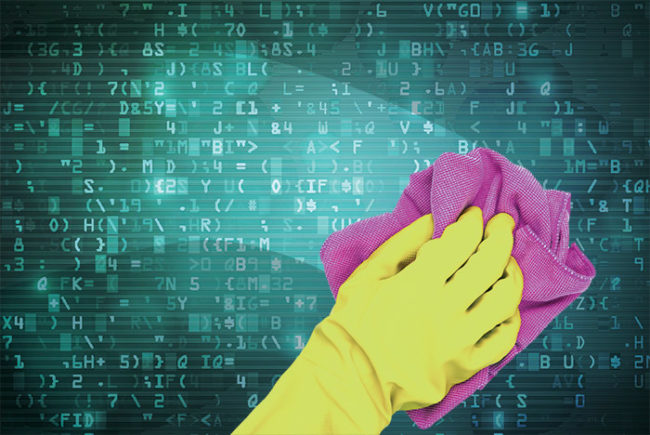At the University of Wisconsin Hospital and Clinics, we use a detailed dashboard to measure our department's successes and areas for improvement. At the end of each month, data and information that have been collected are automatically linked to the dashboard. The finished dashboard depicts the department's report card on 44 objectives or goals.
Following is a small sample of the items we measure:
Room turnaround. Ensuring that incoming patients have quick access to a clean room is essential. In cooperation with nursing staff, we have set turnaround times for staff to respond to STAT beds.
Room cleanliness. Our No. 1 goal is to provide our patients with the best possible care. For environmental services (ES), success or failure often is measured by our HCAHPS room cleanliness score. To promote more ownership, we also break the HCAHPS scores down by supervisor.
Surface testing results. Each month, we test the 17 most highly touched surfaces in at least 63 patient rooms to determine the effectiveness of our cleaning techniques and staff adherence to our procedures. The results of these tests are used for staff education and to help focus our resources.
Hand-washing compliance. A hospitalwide goal that the ES department also has adopted is to achieve 85 percent hand-washing compliance in 2013 and more than 90 percent in 2014. To further strengthen our department's commitment, each supervisor completes individual employee hand-washing assessments each month.
Expenses. In conjunction with our Lean initiatives, we set a goal to reduce expenses in fiscal 2014 by 3 percent. This goal is now one of our dashboard measurements.
Customer service. A hospitalwide customer service survey was completed to determine how accessible, timely, accurate, friendly and efficient our service was perceived. Based on the initial survey, improvement goals have been set, which are now part of the dashboard.
Supervisory performance. Each month, every supervisor has to set expectations and goals. These include:
- Completing at least two formal inspections of every employee;
- Conducting a formal monthly meeting with each unit manager and the responsible area cleaner in the areas covered by the supervisor;
- Completing at least five written hand-washing assessments;
- Completing at least six customer service or patient surveys;
- Conducting a formal staff meeting following the department template for that month;
- Completing all assigned testing of high-touch surfaces to assess staff effectiveness;
- Completing at least five public restroom inspections;
- Achieving or exceeding HCAHPS room cleanliness goals.
The results of each supervisor's performance is included on the dashboard.
Finally, next to each dashboard measurement is a colored box that indicates areas in which we perform well and areas that require attention. A green box means the goal is being met or exceeded; a yellow box signifies we are within 10 percent of our goal; and a red box tells us that we are more than 10 percent away.
By Thomas A. Peck, director of environmental services at the University of Wisconsin Hospitals and Clinics, Madison.
Valuable resources available
AHE represents, defines and advances the professionals responsible for care of the health care environment to ensure high-quality outcomes and healthy communities. Following are a few of the resources that AHE offers.
• Recommended Practice Series: Environmental Services Equipment and Supplies. The equipment and supplies covered in this booklet are essential, discrete components of safe, efficient and productive environmental services (ES) operations. For more information, go to www.ahe.org/ahe/learn/tools_and_resources/publications.shtml.
• Benchmarks and other Metrics for Effective Linen Management. This webinar looks at metrics such as processing and replacement costs, pounds per adjusted patient day, total cost per pound and labor-distribution cost per pound to help you assess and evaluate the cost-effectiveness of your program. To access it, log on to www.ahe.org/education.
• AHE Environmental Sustainability Certificate Program. AHE has launched a new certificate program to acknowledge the ongoing and outstanding environmental and ecological sustainability efforts of ES departments. For more information on the program, go to
www.ahe.org/ahe/lead/environmental_sustainability_certificate_program.shtml.



